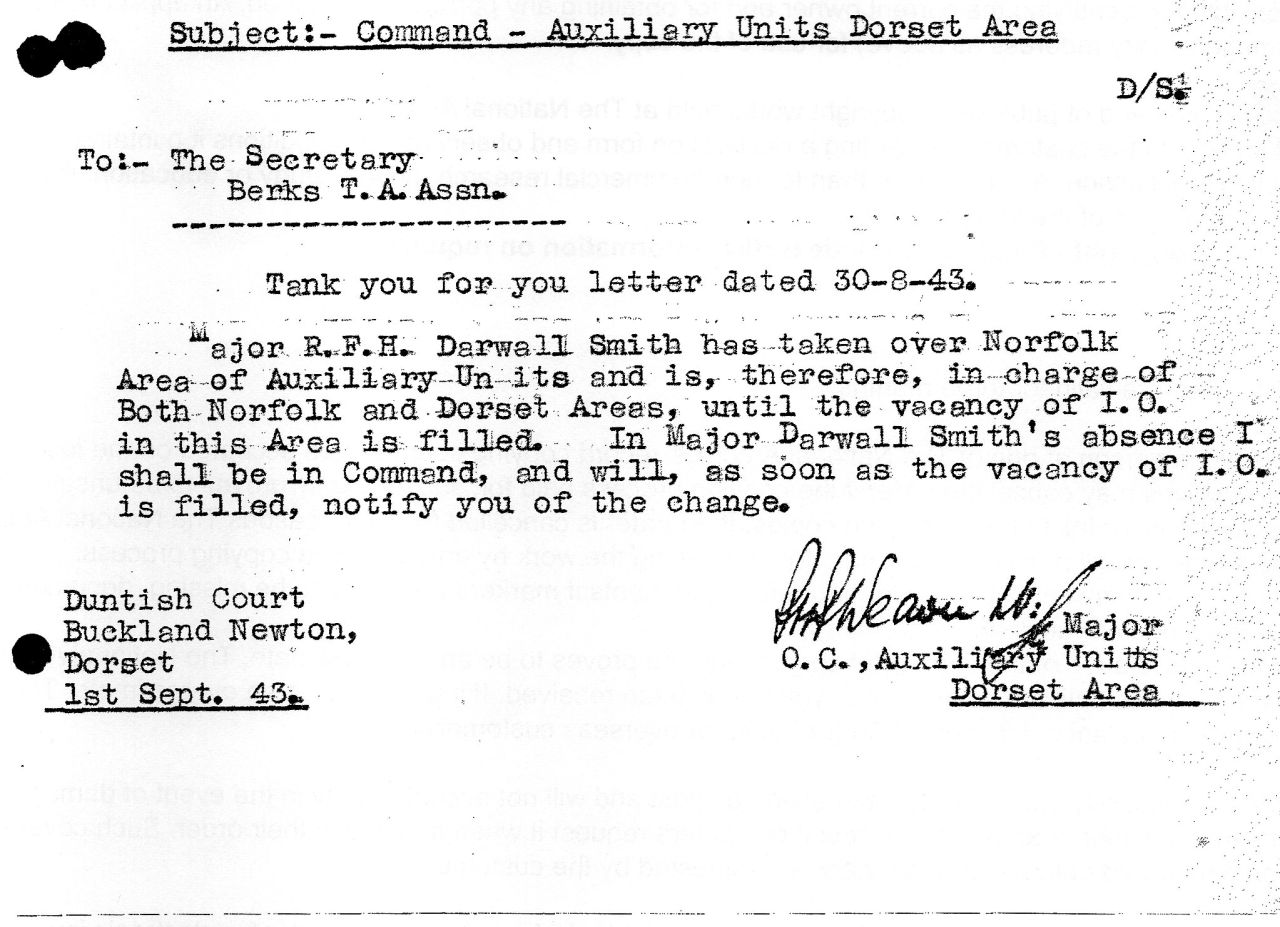
The 40 Dorset Auxiliary Units Patrols can be divided into six Groups from lists recorded by Major Malcolm Hancock based at Coleshill House around September 1944.
There were some changes in Patrols and personnel over time and the Group structure did not exist early in the war, but it provides a useful way to look at the Patrols.
The Dorset nominal roll is divided into two parts, an earlier list of the men by Patrol, together with a simple A-Z address book that was kept updated until Stand Down. The only way to identify which Auxiliers were in which Patrol is by their home address, if they do not appear in the earlier list.
The first Headquarters for Dorset was the home of its first Intelligence Officer at St Giles House near Wimborne. Next came Langton House in Blandford followed by Bingham's Melcombe. When Auxiliary Units were forced to leave there, they found a new headquarters at Duntish Court at Buckland Newton and moved in on 16 Mar 1943. On 1 Oct 1944 the Dorset Headquarters was closed down and the county was administered from Bishops Waltham in Hampshire as part of Area 3.
| Role | Name | Posted from | Until |
|---|---|---|---|
| Intelligence Officer | Captain The Lord Tony Ashley | 15 Jul 1940 | 03 Feb 1941 |
| Intelligence Officer | Captain Richard John Victor Goss | 21 Jun 1941 | 29 Jan 1942 |
| Intelligence Officer | Captain Nils Patrick Francis Leander | 22 Aug 1942 | 12 Dec 1942 |
| Intelligence Officer | Captain Randle Frederick Hicks Darwall-Smith | 12 Dec 1942 | 02 Feb 1943 |
| Intelligence Officer | Major Randle Frederick Hicks Darwall-Smith | 04 Feb 1943 | 13 Aug 1943 |
| Intelligence Officer | Lieutenant Philip Humphrey Peter Weaver | 13 Aug 1943 | 27 Sep 1943 |
| Intelligence Officer | Captain Archibald Douglas Hubbard | 22 Apr 1944 | 14 Jul 1944 |
The East Dorset Scout Section and the West Dorset Scout Section were both active 1940 to 1943. In April 1943, as part of the reduction in Regular Army manpower across Auxiliary Units, a number of the men were returned to their Regiments and a Combined Dorset Scout Section formed. Further reductions were made in 1944 leaving just four men to provide support for training.







